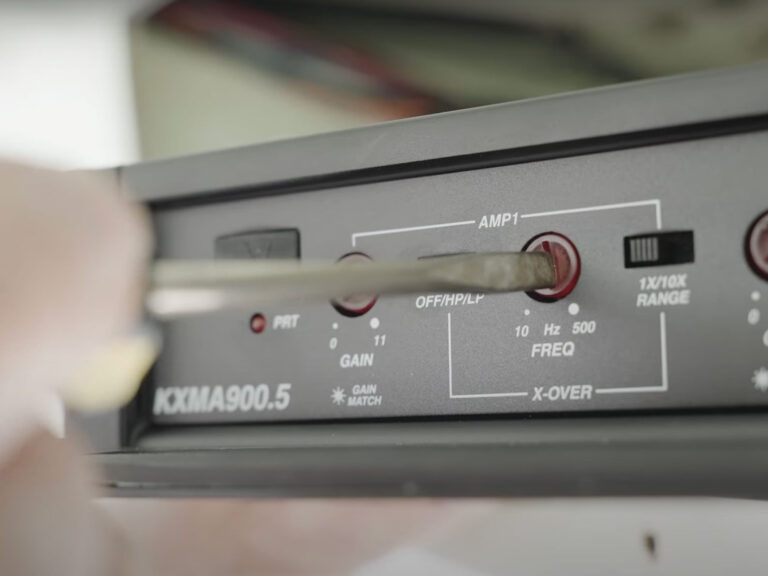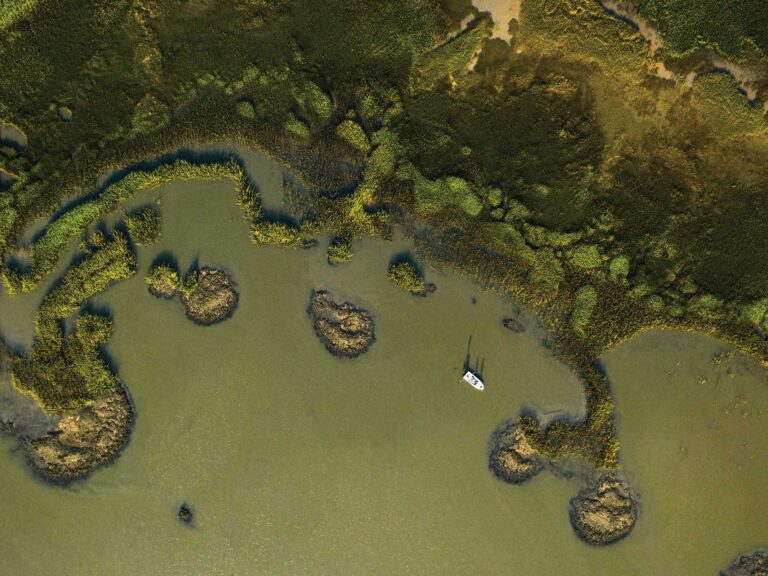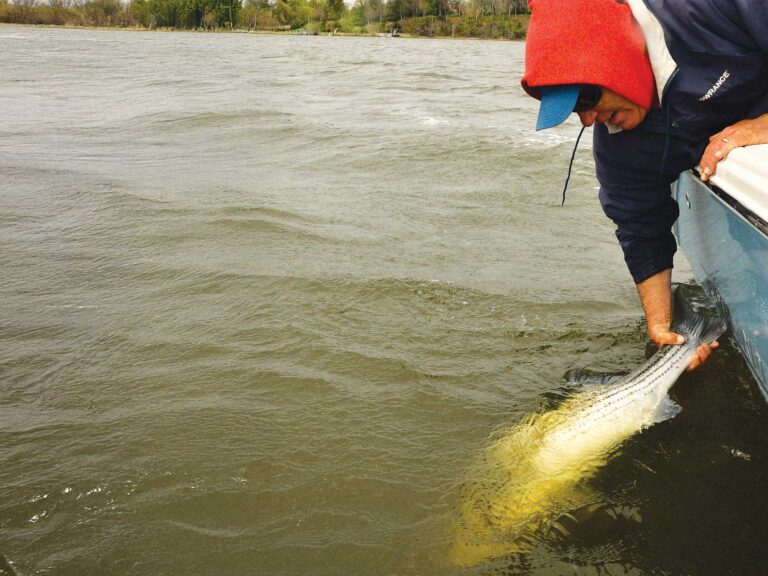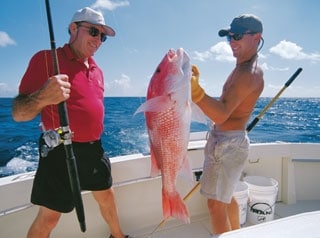
|| |—| || |Once chummed toward the surface with squid and shrimp, snapper are easy targets for light tackle.| It was the fourth huge red snapper in the last 30 minutes, a bright crimson fish pushing 15 pounds, and it was flopping about the deck of the charter boat Teaser with foot-crushing energy, the kind of energy that had almost trashed the light baitcasting reel – and the two hands I’d used to grip it. Skipper Mike Frenette put an end to the snapper’s antics with a hit from the aluminum belaying pin that would have done Barry Bonds proud.
But the skipper saved his best shot for me. He looked at my beaming face shaded by the shadows thrown by the huge oil rig in the Gulf of Mexico off the coast of Louisiana. “So, who was it that was saying snapper fishing isn’t any fun?” he asked, wearing an I-told-you-so smirk. “What do you think now?”
For most of my fishing life, I considered the words “red snapper fishing” and “fun” to be mutually exclusive, a feeling shared by many salt water anglers in Louisiana. It has nothing at all to do with the species: red snapper can be big (15-pounders are not uncommon), can put up a struggle, and have few equals when it comes to table fare, a good quality particularly in bayou country.
But Louisiana red snapper come from a bad neighborhood: Usually 80 to 150 feet down against the oil rigs of the open Gulf.
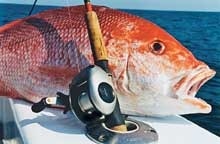
| |Big snapper on lightweight tackle will give any angler all he can handle. | My earliest experiences with snapper came on the crowded decks of party boats where skippers would ring a bell and 30 to 50 anglers would drop hooks baited with freshly cut squid. We used short, broomstick-thick fiberglass rods and heavy offshore trolling reels that swallowed the 80-pound-test Dacron line with huge retrieve ratios.
If the current was strong, sinkers as heavy as 12 ounces might be needed – and it still seemed to take forever to hit bottom. Soon, the line would transmit a bump back to the rod, and a quick jerk was certain to hook the unseen prey.
But instead of a grand, drag-screaming battle, the angler was left simply to crank all that line, and all that dead weight, back onto the big offshore reel. The whole routine was about as exciting as hauling in an anchor. And that wasn’t the worst of it. The quickest way to get seasick in a decent swell is to keep your eyes glued to the water, which is what bottom fishing demanded. If the Gulf was choppy at all, which it often was, anglers would soon be laying out chum lines of a personal nature.
A Different Ballgame
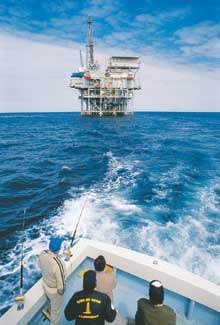
| |The Gulf’s oil and gas rigs are somewhat like vertical artificial reefs – excellent habitat.| For that reason, Frenette’s invitation to go snapper fishing would have been quickly refused if he hadn’t added a magic promise: “Light tackle, drift fishing.”
Maybe he could put fun back into my snapper fishing. Frenette explained that several years ago he was drifting cigar minnows behind a rig trying to find some king mackerel when he caught a few red snapper on his Venice-based charter boat.
“I thought that was just a freak accident and forgot about it,” he said. “But then some charter captains in Florida told me about their experiences with snapper. They like to chum the fish up, then drift baits to them.
“Well, I tried it and it works. And I’m betting I can get you to like red snapper fishing again.”
Frenette was talking about snapper fishing with rigs that put the lie to everything I had ever known. No bottom fishing with heavily weighted jigs in 150 feet of water. He was talking about fishing these bottom-feeders by free-lining baits near the top of the water column. And he said it actually worked.
He chose a perfect day to prove it: The Gulf was relaxing under gentle breezes, showing only one- to three-foot seas and very little current. That last factor was important; current determines the speed of the drift. Snapper, like all reef fish, hang out close to structure, in this case the legs of the rigs. A heavy current will drag the bait far away from the fish; even a moderate current can keep the bait from sinking fast enough to reach the fish.
Soon after tying up to the rig, Frenette began laying out handfuls of shrimp and squid as chum. Some 4,000 offshore oil and gas rigs form a steel forest off the Louisiana coast, and we were fishing a platform in a section called Main Pass, about 10 miles off the southeast side of the Mississippi River delta. We were in 80 feet of water, and Frenette was hoping the chum would pull the snapper to within 20 feet of the surface, or even higher.
“Once we work them up, we can keep them there with the bait,” he said. “Believe me, this isn’t going to be anything like bottom fishing.”
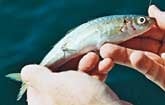
| |A hook and a cigar minnow – the rig of simplicity.| That was obvious from the gear. Frenette had pulled out several fishing rigs that seemed more appropriate for bass: medium-action baitcasting reels loaded with 20-pound test. The only difference was the 3/0 circle hook on the end of the line. He passed that hook through the eyes of a whole cigar minnow, then imbedded its point in the body. That was it: no sinkers or weights of any kind to drag the minnow to the bottom where snapper lived. The rig made one thing very clear: Any snapper thinking of taking this bait would have to rise to the task.
A short cast put the bait about 15 feet from the Teaser. Keeping the reel on free-spool, Frenette instantly began a continuous motion of stripping off line in short, four- to five-inch sections. As the bait moved away from the rig with the current, it sank at a very slow rate.
“Remember that the legs of a rig go out quite a distance from the surface structure near the boat,” Frenette said. “This bait is drifting down slowly, but it’s still over the rig legs.
“There’s really no set distance, or length of line, where we stop. I just keep peeling it off until I’m about halfway down the spool, then I reel in and start over.”
He didn’t have to this time. After feeding out about 50 yards of line, he felt a distinct pop on the other end. Like a trout angler working a live minnow, Frenette reeled the slack out of the line, pointed the rod tip to the water, then hauled back to set the hook – and did.
Instantly, the rod arched toward the water, and line began peeling off the drag. As he worked the fish closer to the surface, it made several runs to either side of the transom, once working along the gunwale and under the hull, hauling Frenette around as if it were a king mackerel or wahoo.
|| |—| |Too Much of Good Thing? The more than 4,000 oil and gas rigs off the Louisiana coast from what is arguably the world’s largest artificial reef. They range from yards-wide structures in 20 feet of water just off the beach, to blocks-long monsters in thousands of feet of water 50 miles offshore. Their steel legs quickly become home to barnacles and algae, which attract small prey species that, in turn, beckon top-line predators from barracuda to tuna and marlin.But the rigs have been a mixed blessing for sportsmen. Thousand of miles of support canals dredged across coastal marshes have been a major factor in the rapid loss of estuarine habitat. That tragedy, scientists say, will eventually cause the loss of most fisheries, as well as the many coastal communities that were built upon them.| They don’t give up easy. It took a full five-minute battle before a 12-pound snapper, as pink as a marsh sunset, finally slipped into the net.
This was not snapper fishing as I had known it. This was prime light-tackle sport, and it was only beginning. More snapper moved toward the surface. They smacked the baits like a bass hitting plastic worms, or a red attacking a live cockahoe, then fought like demons once hooked.
“Told you it would be different,” Frenette repeated.
He was right – over and over again.
Seasons: Louisiana’s snapper season runs from April 21-Oct. 31. Limit is four daily with a 16-inch minimum.






